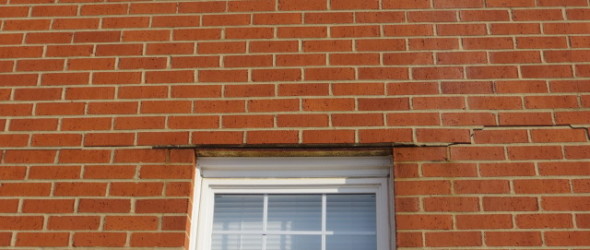How To Repair Cracked Stone Lintel


Lintels are used above openings in walls such as windows or doorways to support the weight of masonry above. They consist of a horizontal member supported either side of the opening. In modern construction lintels tend to be made of steel or concrete, but in older buildings they are commonly found to be made of timber, stone, steel or concrete. Broken stone lintel in chimney breast - how to fix? Is it possible to fix stone lintels whilst they are in situ. Complete with cracked lintel.
B.tech Books For there. Lintel Repair Modern methods of lintel repair are fast, efficient and can often be carried out with little to no disruption and without the need for take down and rebuild. Lintel failure is a common problem in properties of all ages and all types of lintels. It is especially common in Victorian properties and can pose serious threat to safety. Brick Arch and Soldier course lintels in period properties can fail and sag causing the masonry above to drop and crack losing all structural integrity, over time will become worse and has the potential for collapse.
Lintel failure often appears after the replacement of windows and is caused by the removal of load bearing windows that are replaced with non-load bearing windows such uPVC causing failure. It is also common to have historic settlement of the lintel which may go un-noticed or not be deemed as a serious defect, which is often not the case. In the majority of cases lintel repair is straightforward using and pinning ties, combined with resin injection systems which restore the structural integrity of the lintel whilst retaining the aesthetics of the facade. Newman Building Solutions work in partnership with contractors carrying out window replacement schemes for private clients and social housing offering fast cost saving solutions allowing the safe removal of windows and doors. As a leading specialist Newman Building Solutions are able to offer 10 year insurance backed guarantees on all lintel restoration design schemes.
May 5 2013 Cracks Above Window and Door Openings Diagonal cracks above window openings and door openings are common structural defects that show signs of movement which will need to be rectified. Diagonal Cracking Above Opening Diagonal stepped cracking often indicates that the lintel that supports the masonry above the opening has failed. There are many types of lintels available and in use such as brick arch and soldier course lintels commonly found in period properties.
Newer lintels are normally steel Catnic type lintels which can also fail showing signs of diagonal cracking above the opening. Diagonal Cracking Above Opening In many instances the threat of collapse is over looked and simply ignored, in some cases cracks are raked out and repointed but if further movement was to occur the already compromised lintel could in theory collapse bringing the masonry above it crashing down as well. Diagonal Cracking Above Opening Lintel Failure often occurs upon the removal of hardwood windows that were originally designed to bear a substantial load without distorting and are replaced with standard uPVC windows which are non-load bearing allowing the lintel to drop or bow causing sagging of the lintel which is shown by the diagonal stepped cracking. Traditional methods are to remove the lintel and rebuild it, this is an intrusive method of repair and a slow process typically taking around a day to properly remove and replace a lintel. Lintels can now be repaired using the Twistfix Helical System by using their which effectively creates a new lintel within the existing masonry by remove the mortar within two bed joints above the lintel and inserting helical rods encompassed in grout to create a load bearing lintel which spreads the structural loads across the length of the bars preventing further sagging of the lintel. Bed Joint Reinforcement Repairing Lintels With the patented Twistfix 9mm CD helical tie we are able to install 450mm long ties vertically through the masonry in the lintel and pin it into the masonry above.
This method is a vast improvement on previous pinning methods which often required 16mm holes drilled through the lintel. We can now install these ties through just 6 or 7mm pilot holes. This type of repair is a fast and effective method of repair which has been tried and tested with BRE approval.
Newman’s can guarantee this type of repair for ten years as we are a member of IGL insurance which covers the consumer in the event that we cease trading.